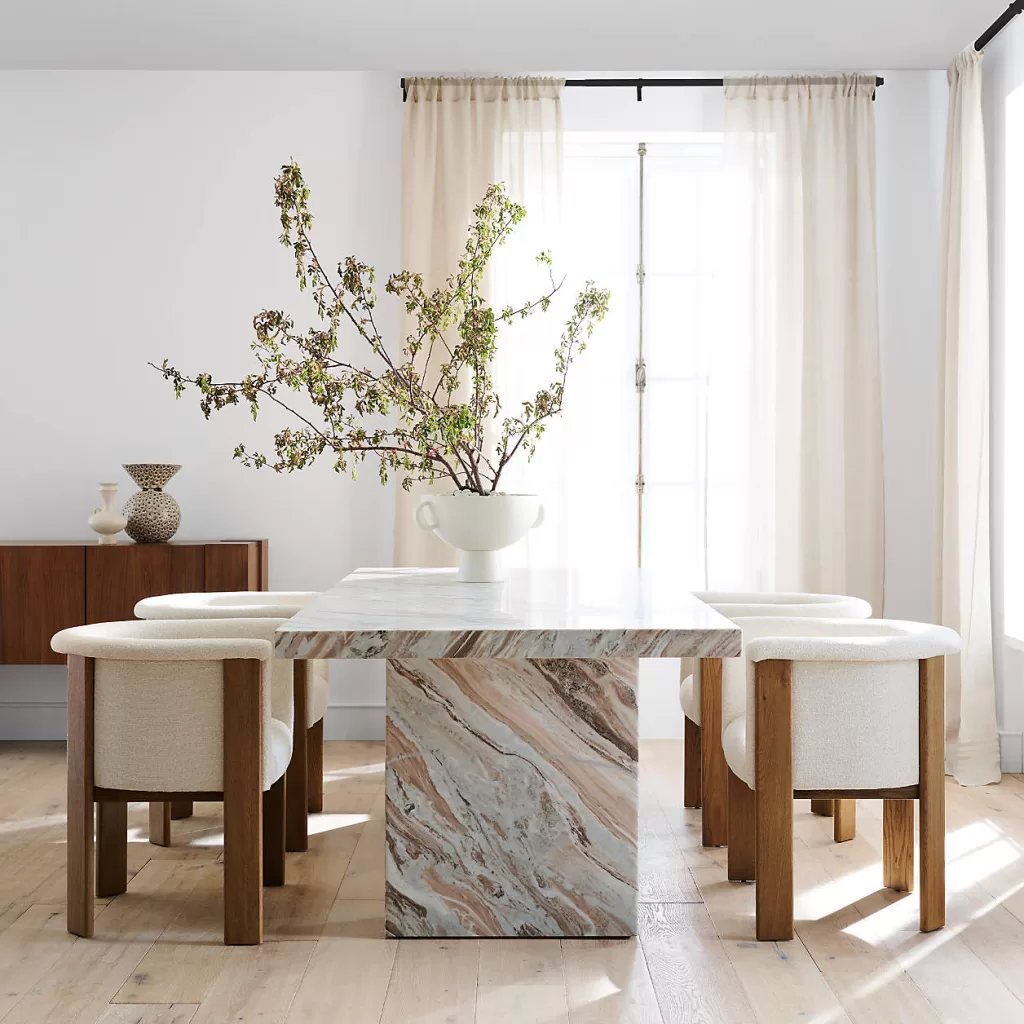What is Organic Modern Interior Design? And How to Get the Look at Home

Organic modern interior design a major decorating trend right now. Designers from Amber Lewis to Athena Calderone are embracing the style, and it’s long-since trickled down into mass-market retailers like West Elm, Anthropologie and Crate & Barrel.
Personally, I looove this style. It’s equal parts clean and calming, and warm and inviting. To me, it feels almost like the modern farmhouse and midcentury trends got together and had a much more urbane and sophisticated baby. It shares the rustic elements of the farmhouse style (don’t throw away those farmhouse pieces just yet!), but instead of layering them with shabby, country design, we’re mixing them with contemporary and midcentury pieces.
While I personally haven’t gone full organic modern in my own home, since I live in an early 1900s colonial that’s better suited for more traditional looks, I have definitely embraced elements of the trend.
If you’re loving the style for your space, let’s look at what’s considered organic modern interior design, and how to achieve this warm-yet-serene look at home.
What is organic modern design?
Organic modern design can also be called warm minimalism. It’s characterized by a mix of contemporary silhouettes, earth-inspired colors, and organic materials and forms. The look is layered, and blends both old and new.
Hallmarks of the style include:
- Earthy neutrals like cream, beige, rust, and tan, plus wood tones in all shades
- Streamlined furniture, often mixed with exaggerated silhouettes and sculptural lines
- Midcentury accents in both furniture and decor
- Rustic pottery and earthenware. Think planters, lamps, vases.
- Rough-hewn details like unfinished wood, handmade hardware, rustic antiques
- Nubby or noticeable textures like boucle, suede, gauzy fabrics with frayed edges
- Organic natural materials like limestone, soapstone, heavily-veined marble, unlacquered brass, pewter, and iron
- Indoor trees and plants are a must
The best way to get a feel for the style is through images. Here are some of my favorite organic modern spaces which will give you a clearer idea of what it all looks like. (Gorgeous. it’s gorgeous.)
Examples of Organic Modern Interiors
These spaces show the range of organic modern design. Some lean a bit more to the contemporary side of things, while others feel more rustic. The beauty is that you can tailor the look to your own home and tastes.
Athena Calderone’s home in the Hamptons is a beautiful example of the organic modern style. Note the neutral, layered elements and mix of styles.

The combination of the sleek staircase and the handmade pottery is a perfect example of the organic-modern contrast. Can you see how cold this staircase would look without the addition of the vase?

The Leanne Ford X Crate & Barrel collab is a great resource for organic modern furniture pieces. Lots of wood tones, creams, and boucle to be had there.

This space shows a perfect color palette for an organic modern interior: various shades of white, with rich tans, antique brass and a few touches of black.

Yet another Leanne Ford design, this room is a little more on the rustic side, but it’s a great example of how to incorporate contemporary elements into an antique space to create an organic modern feel.

This is the gorgeous home of Shelby Girard, design director at Havenly. Her space definitely leans heavier on the modern side, which balances the traditional bones of her home.

This room is a tailored approach to the organic modern style, which is perfect for apartments or small spaces.
How to get the organic modern interior design look at home

If you love this overall vibe and want to create organic modern interior design at home, here are a few tips for getting the look.
1. Start with a neutral and natural base.
Choose wall colors like creamy white, alabaster, or ivory, like SW Alabaster, BM White Dove, or BM Swiss Coffee. Or, go with a richer camel or caramel tone on the walls.
For furniture, you’ll again want to stick with warm-toned neutrals. Off white, camel, amber, and wood-toned furniture all works well for this look. But, if you’re color-averse or want to keep things simple, you can’t go wrong sticking with warm-white tones.
When it comes to upholstery for large pieces like a sofa or headboard, be sure to choose furniture in natural fabrics like cotton or linen (or a performance blend that mimics the look of cotton or linen). Boucle is another great choice. Velvet and leather can be great accent fabrics in an organic modern space, but can feel to heavy for the style on larger pieces.
2. Choose modern silhouettes
An organic modern room needs contemporary design elements. How you incorporate them will depend on your space and budget, but, the goal is to achieve balance between the rustic or antique elements and the modern ones. So, if you have a classic white roll arm sofa you might want to balance it out with a minimalist coffee table and midcentury accent chair.
3. Layer in warm-colored textiles.
Rugs, bedding, throw pillows and drapery offer a chance to add a touch of color that underscores a warm minimalist room. Go for shades like camel, amber, rust, brown or, of course, cream or white.
4. Add a few modern and rustic accent pieces.
Accent pieces should also speak to the vibe of the room, so shop for both contemporary and rustic pieces. Think: vases and platers that look antique or handmade, with sleek coffee table books and modern light fixtures..
You’ll also want to make sure that the the accents in your room go with your neutral color palette!









3 Comments